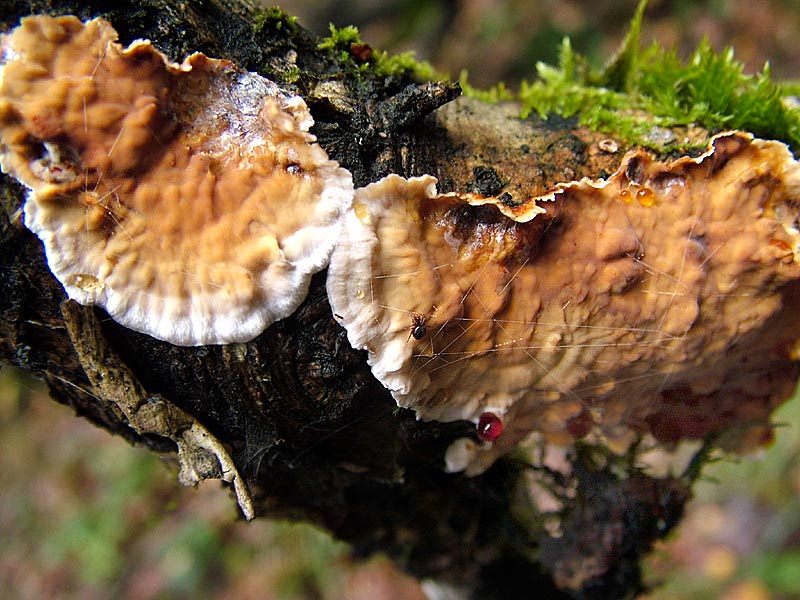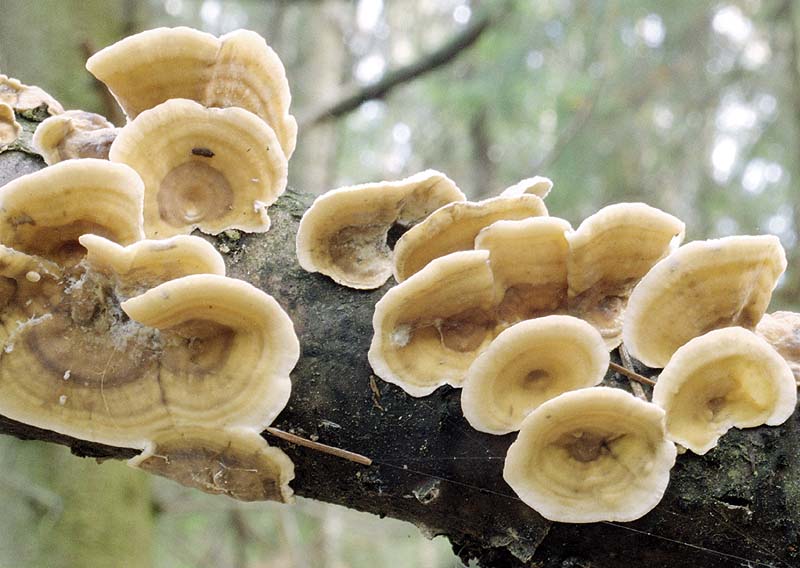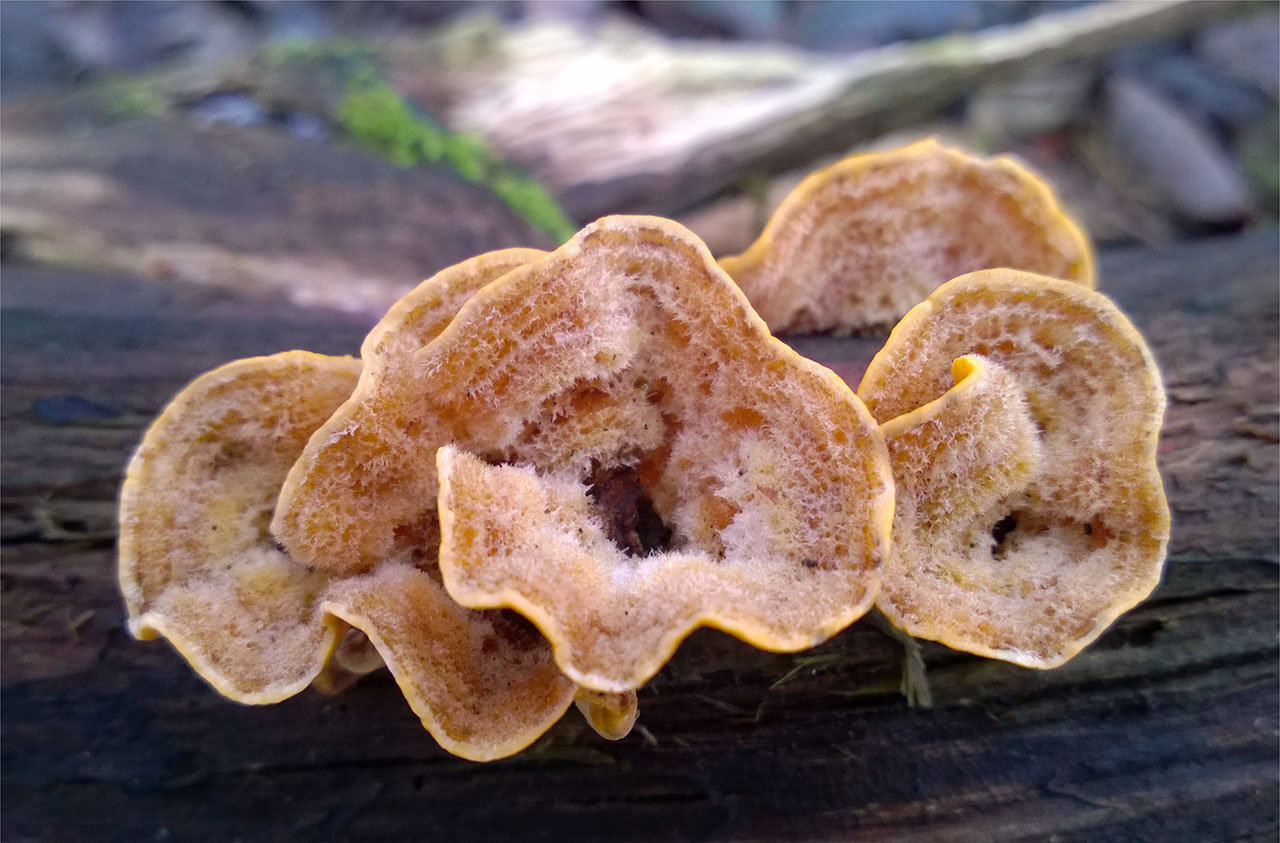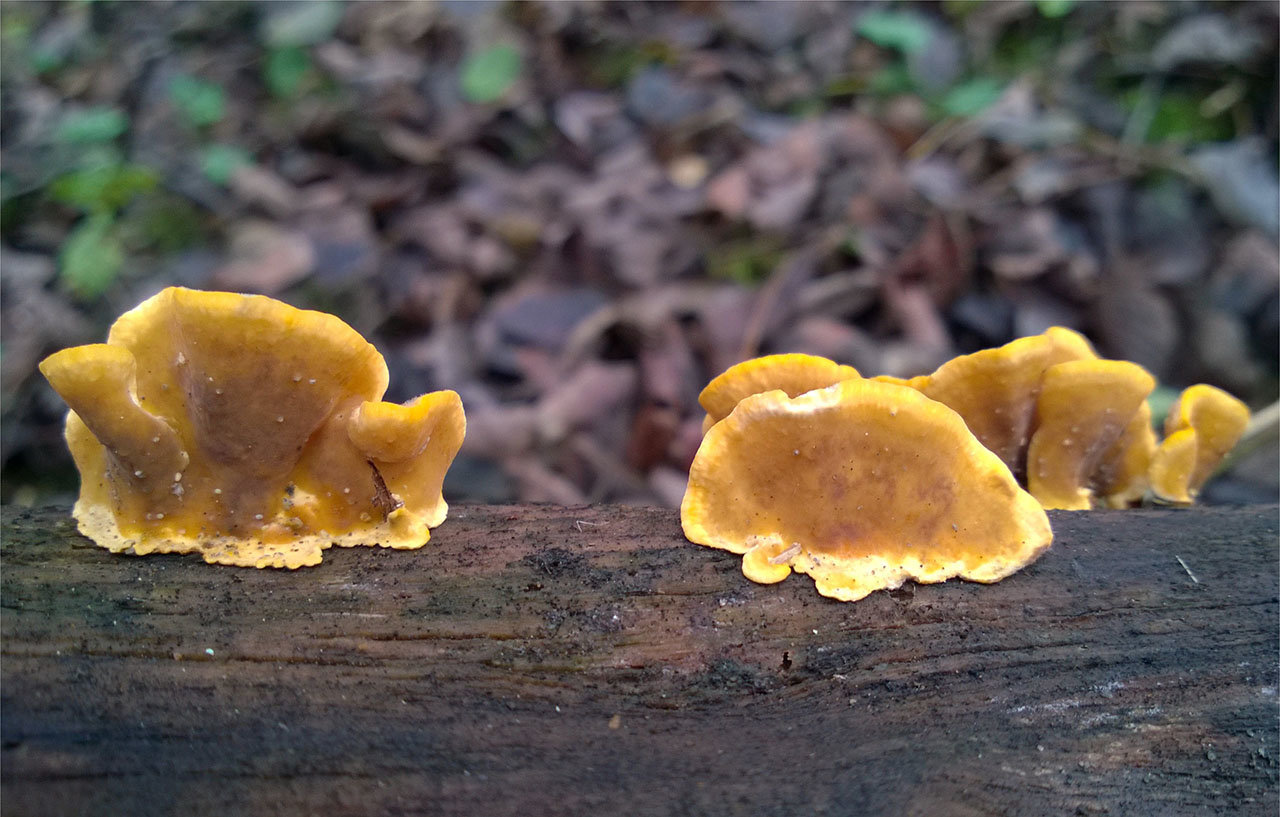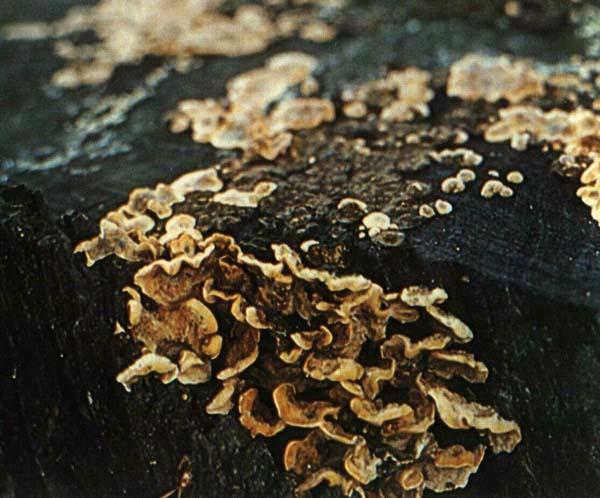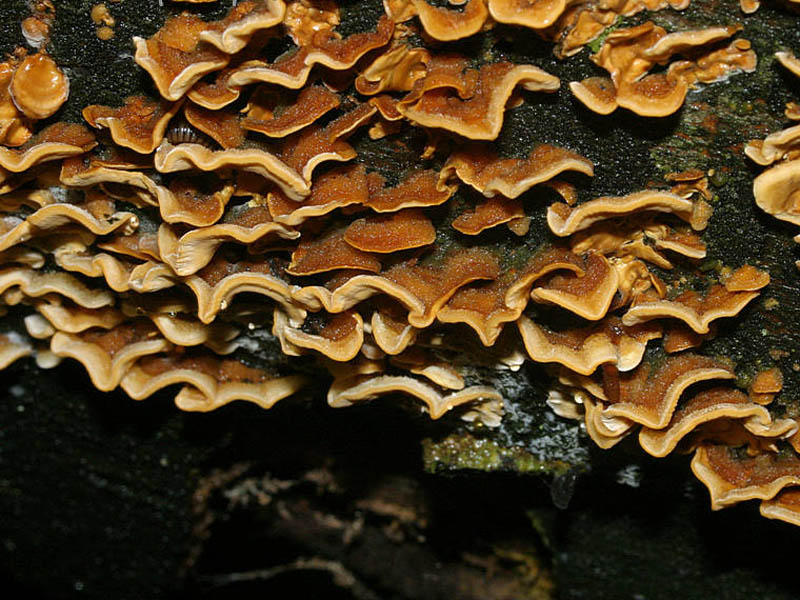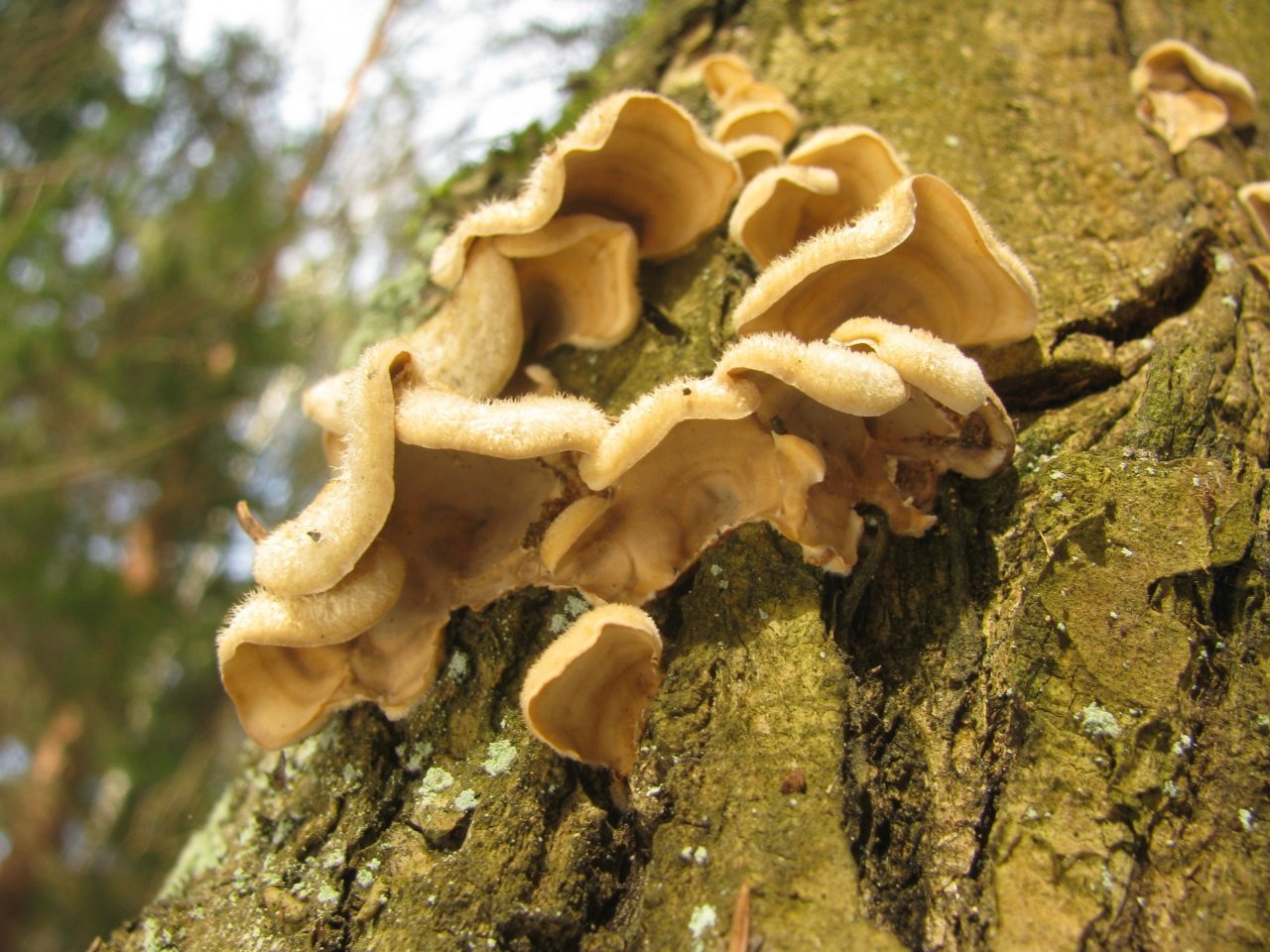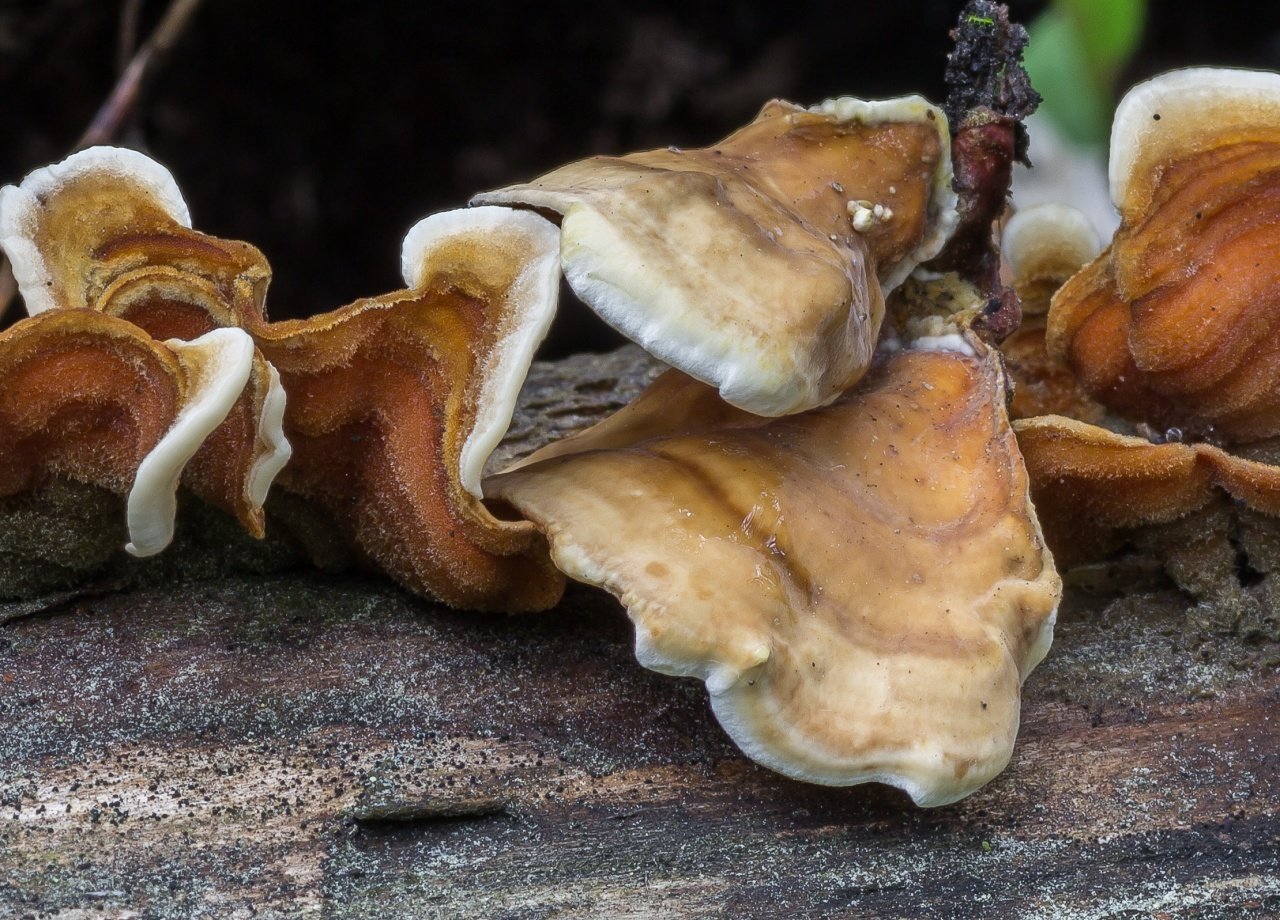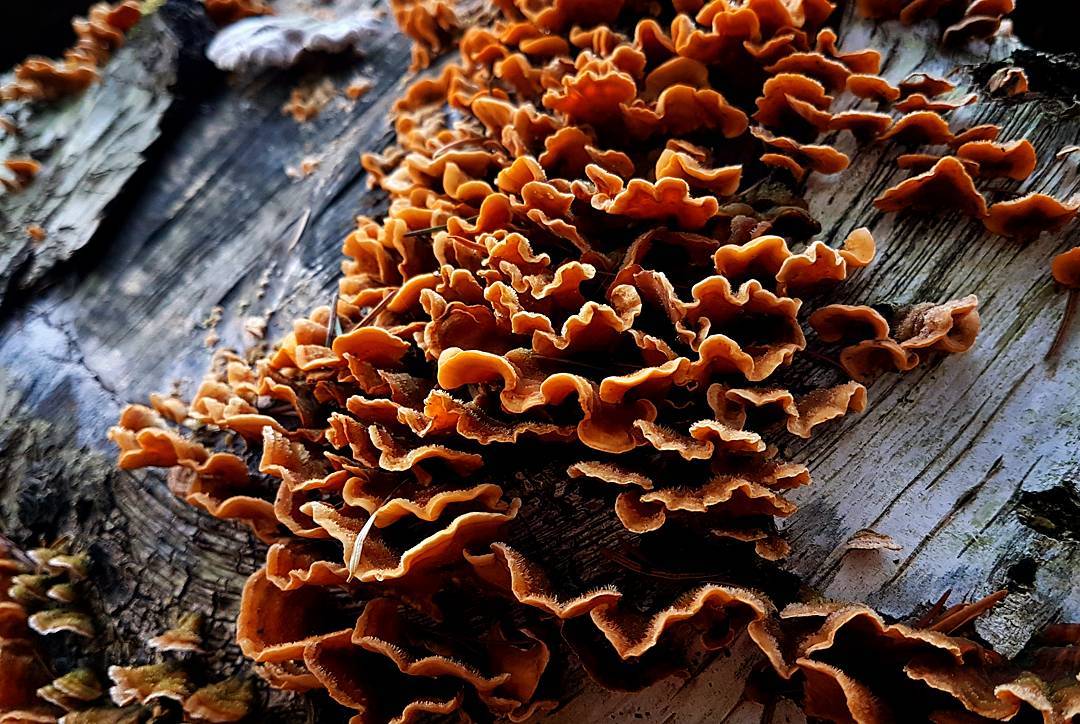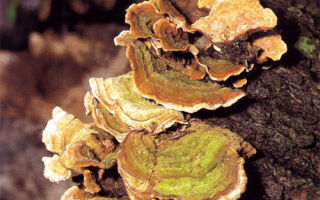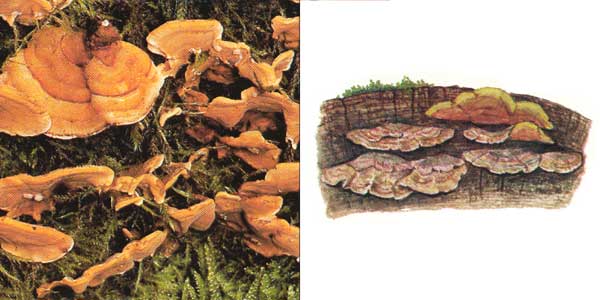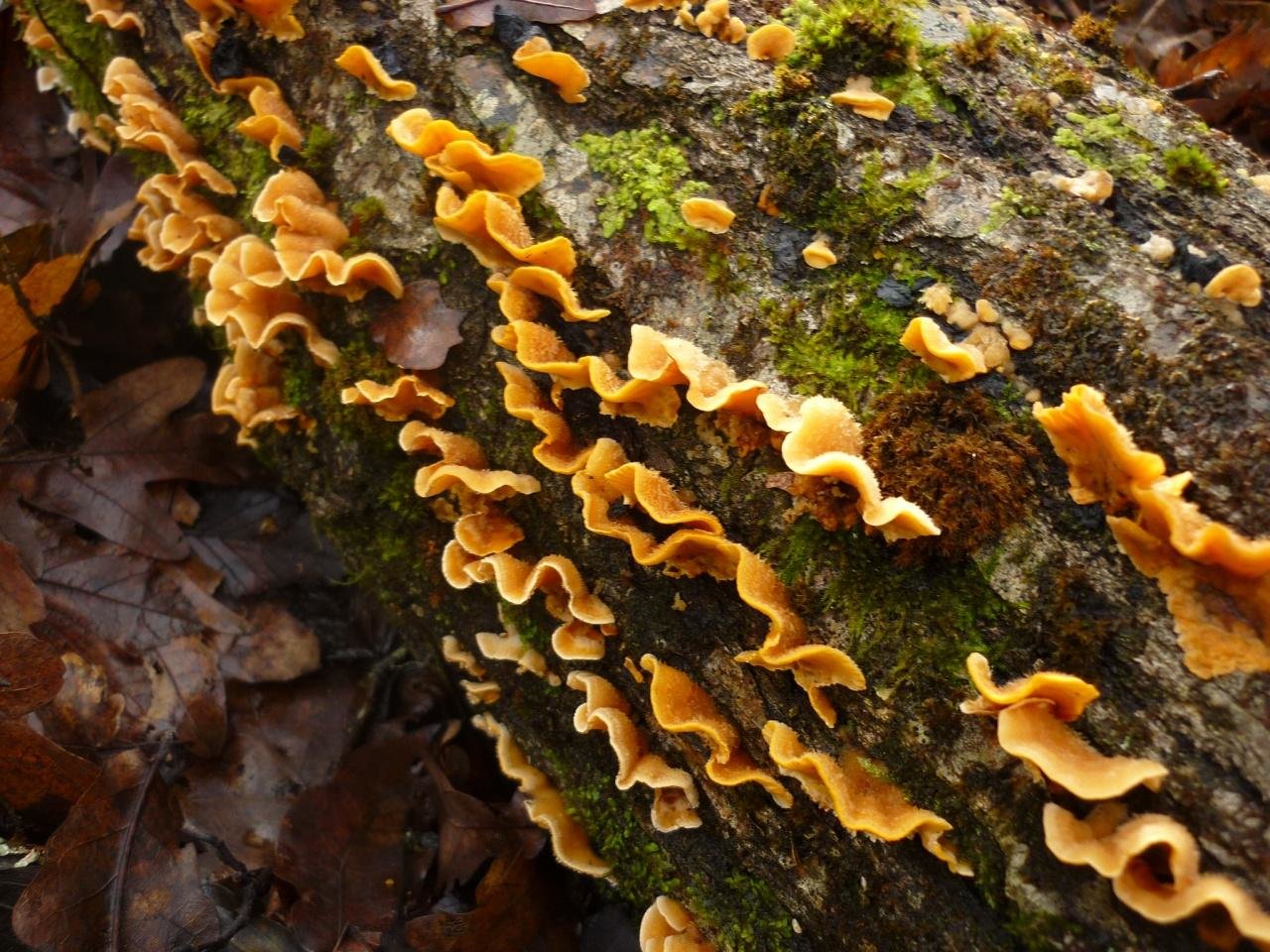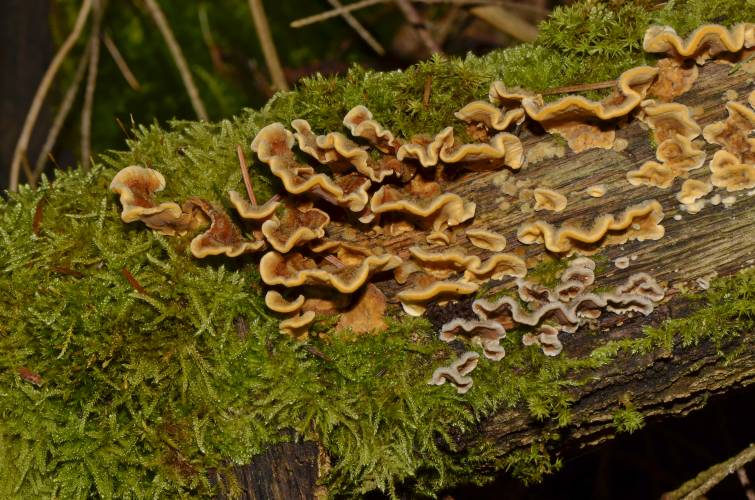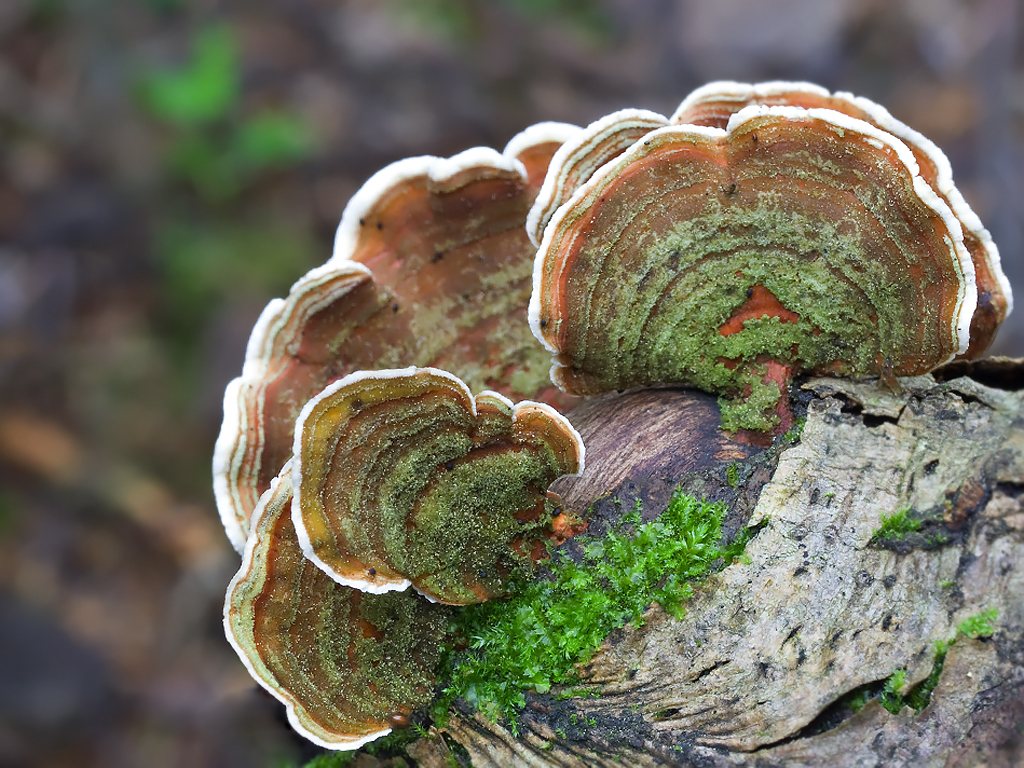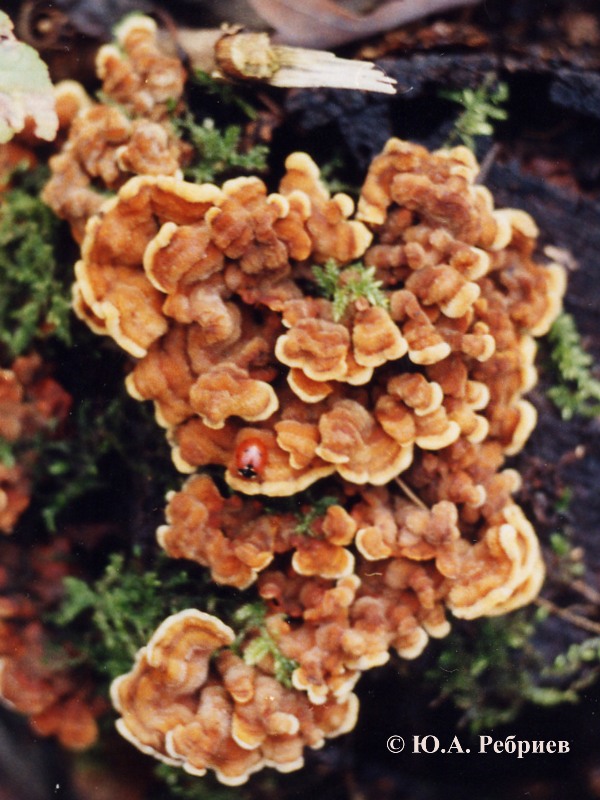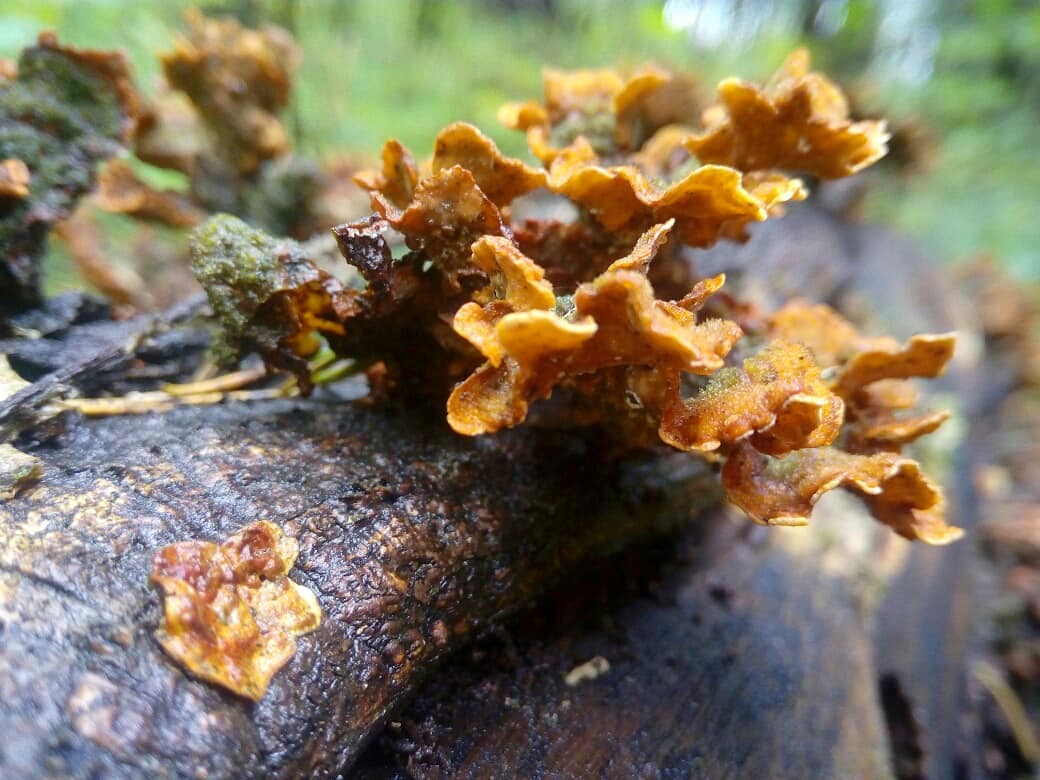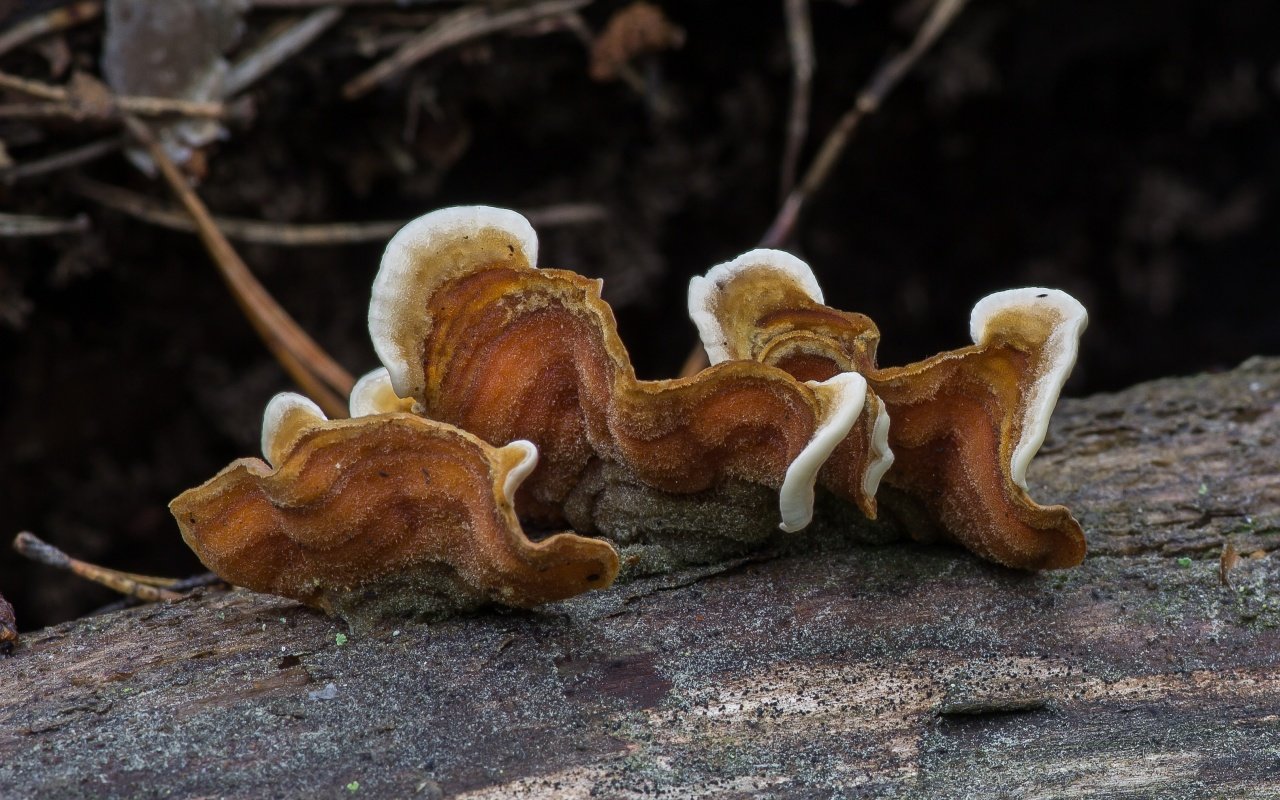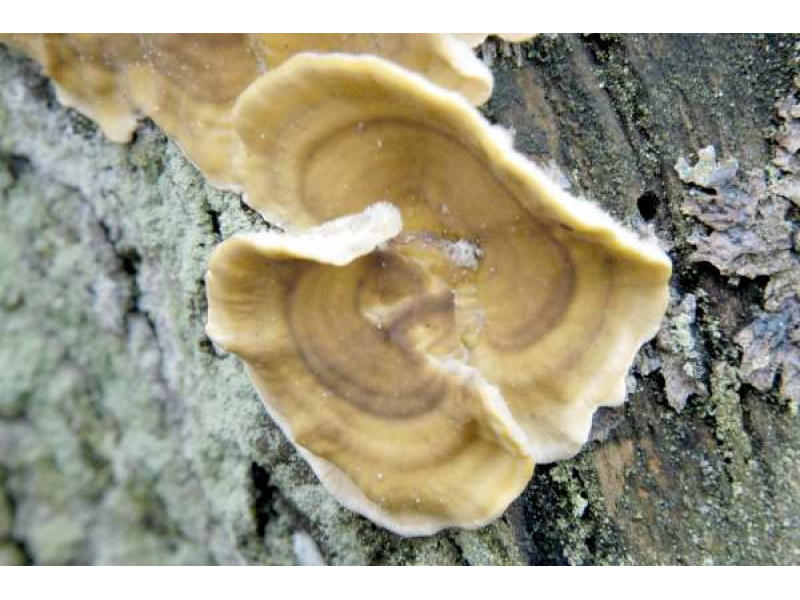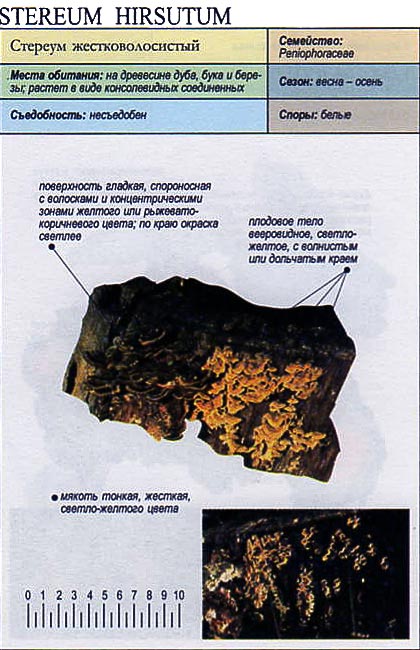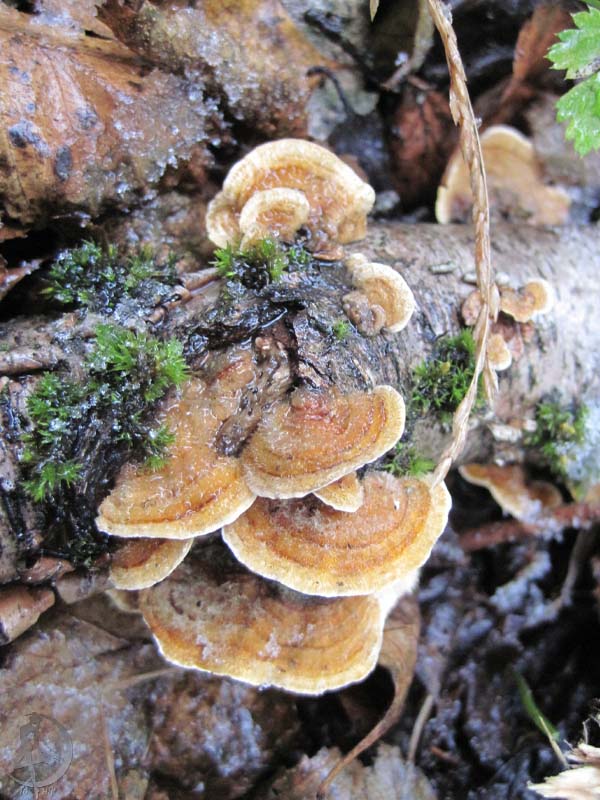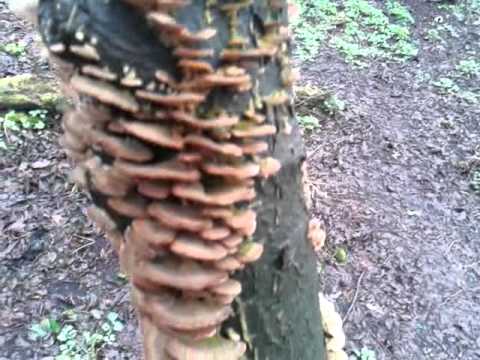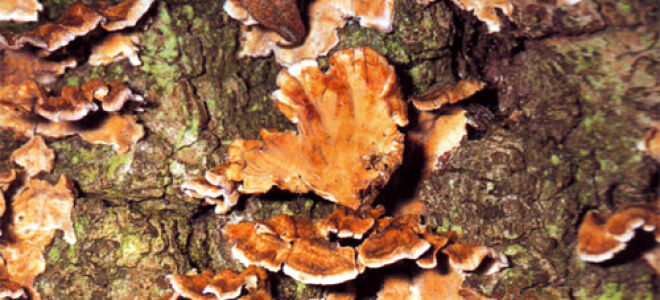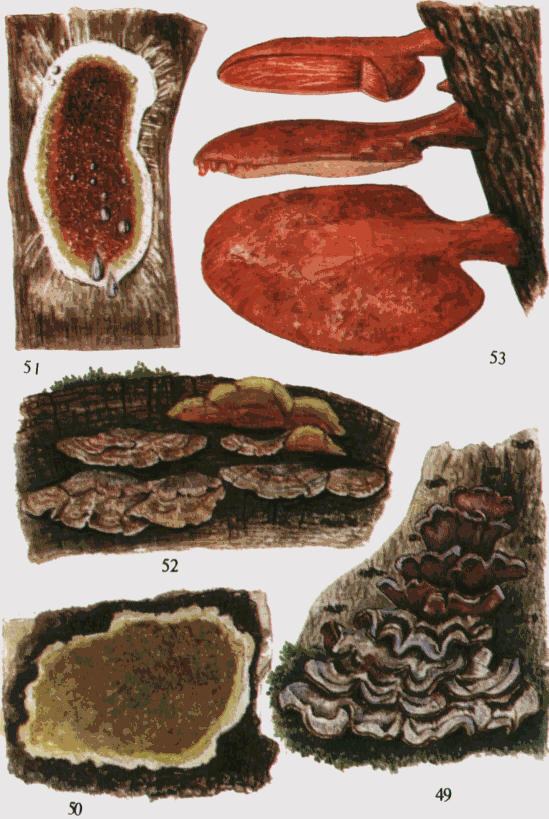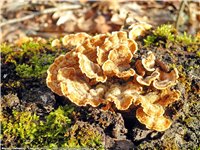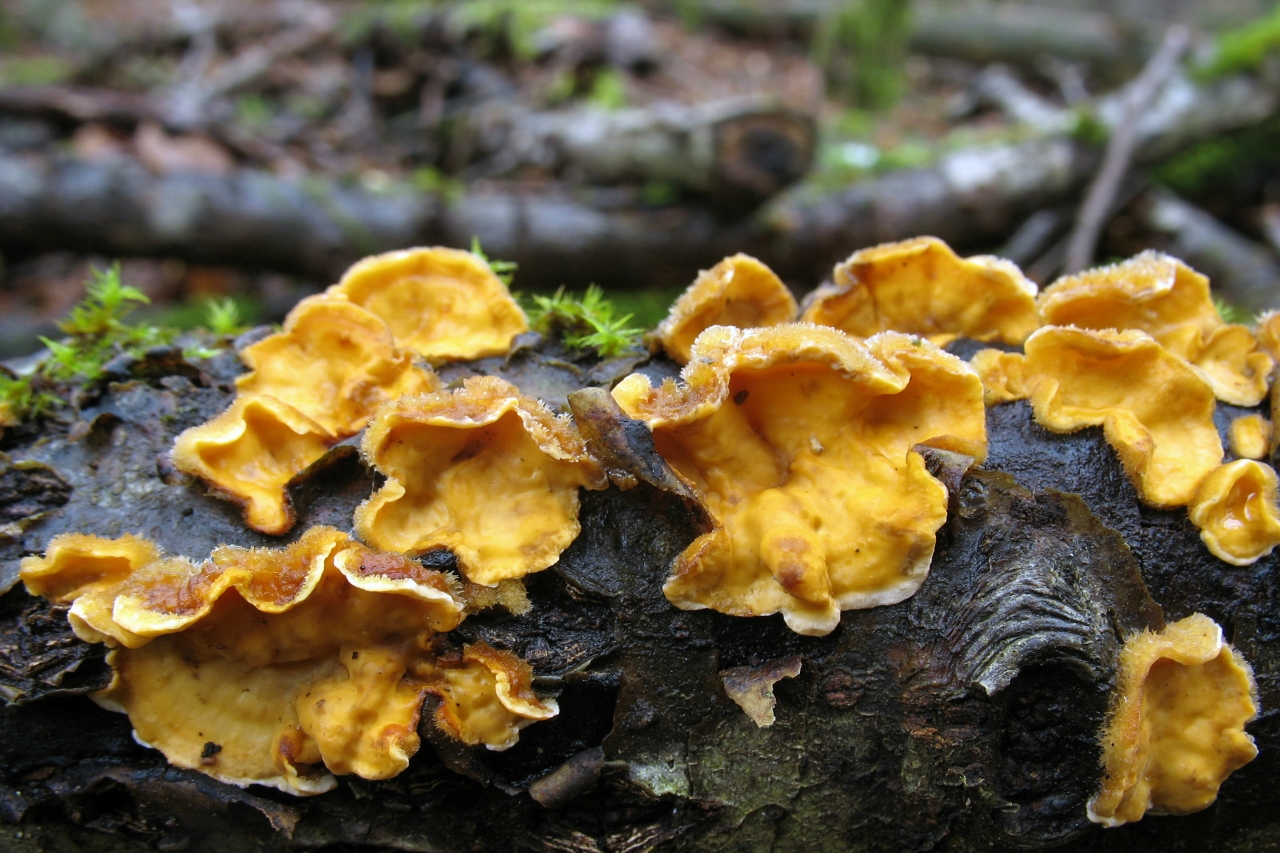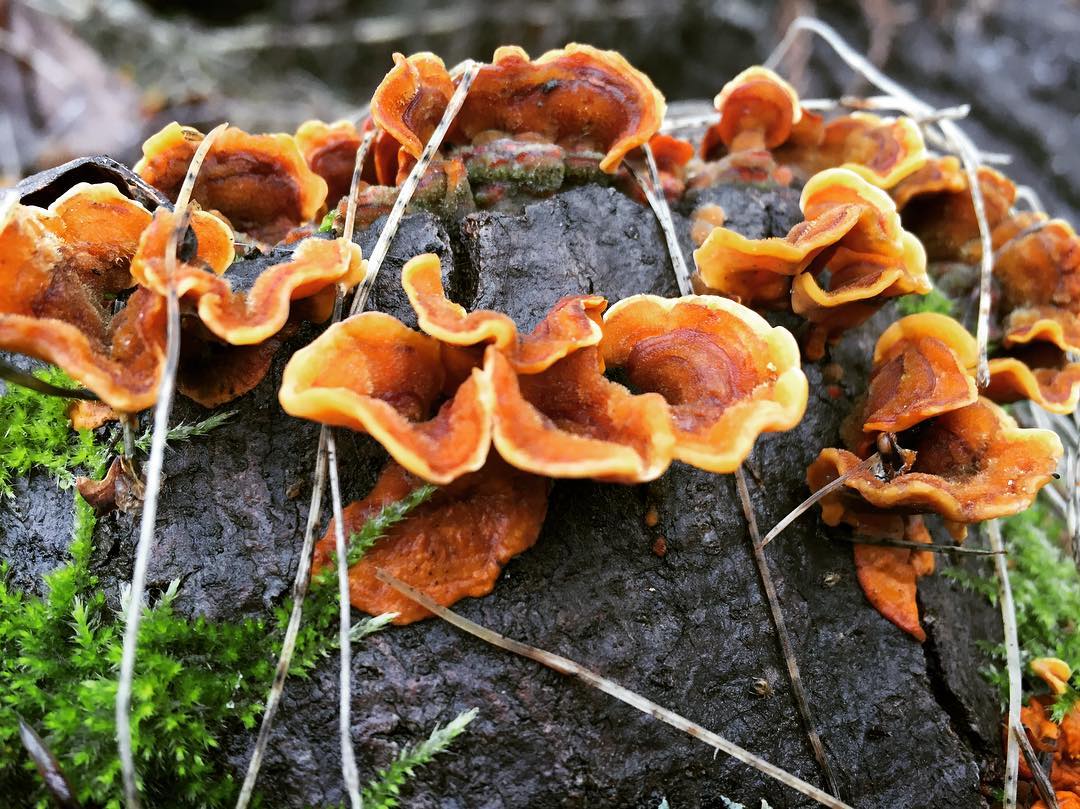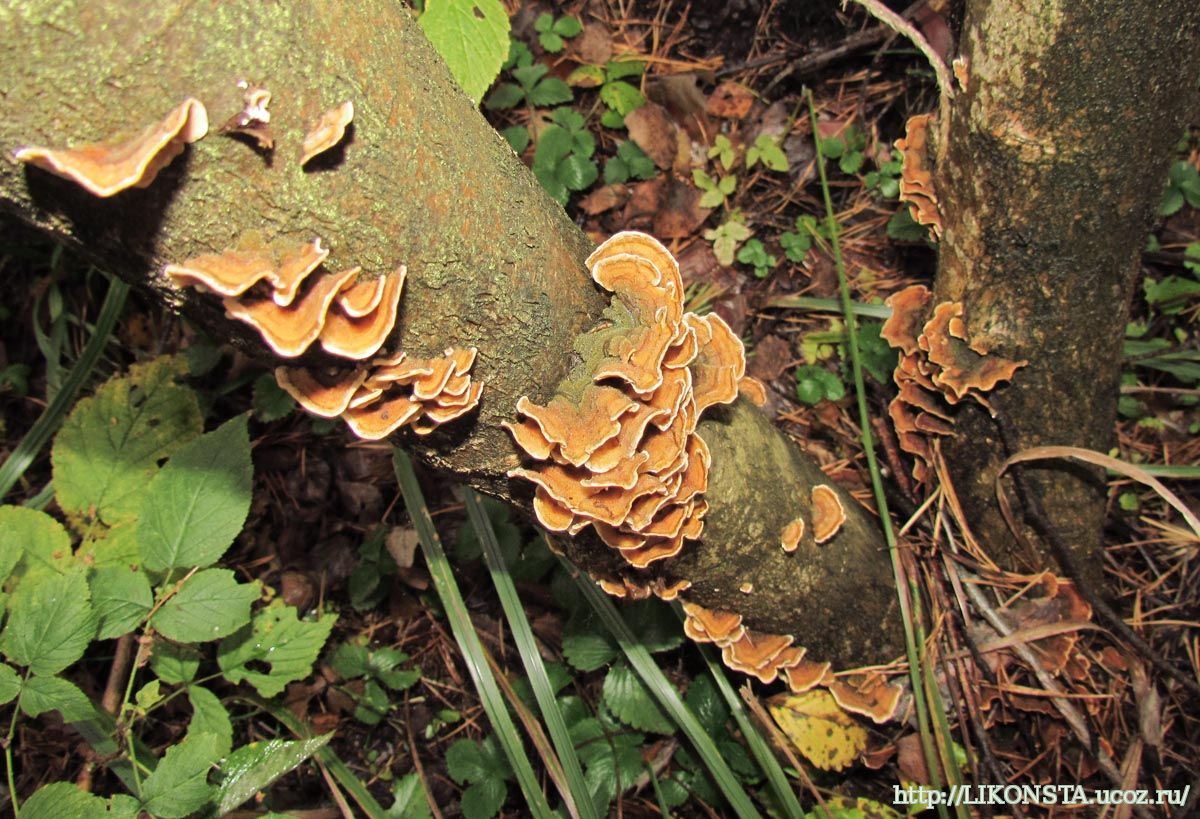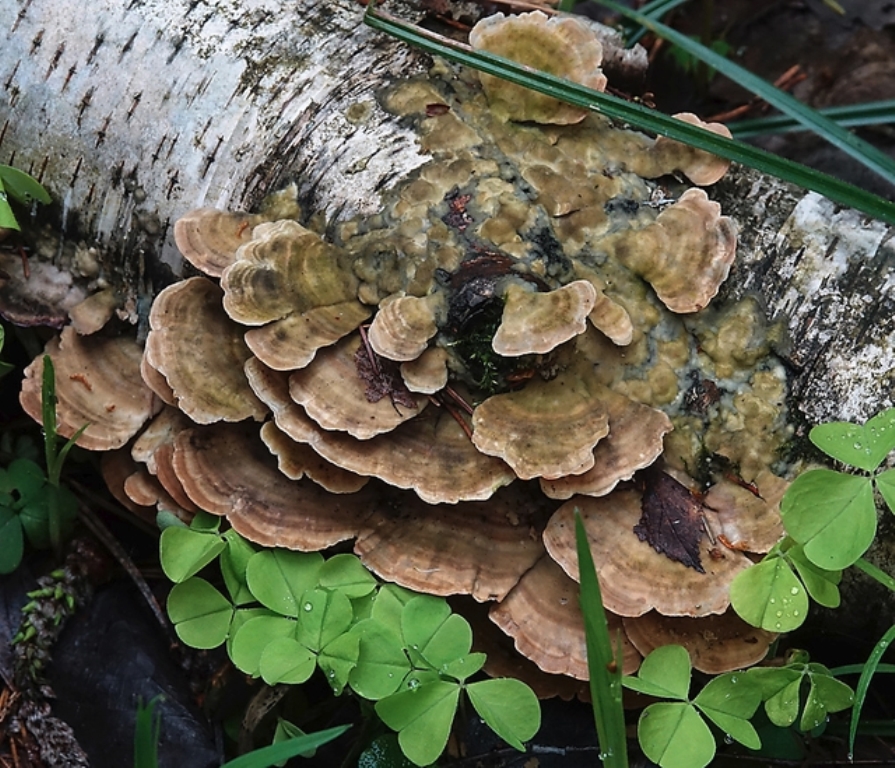Specifications
Stereum types of wood decay of fungi. Their simple, shelled fruiting bodies have smooth hymenium, no gills or tube. Like most members or the Stereaceae family, Stereum fruiting bodies lack the junction of the clamps and produce amyloid basidiospores.
Species can be divided into two groups: lounging (those that secrete a red liquid from cut surfaces, likewise Lactarius species) and not-dabbling (those that don't). In 1959, Zdenek Pozar created a special family, Haematostereum , for the coagulation of the species Stereum including H. gausapatum , H. rugosum and H. sanguinolentum ... Modern authors do not consider Haematostereum to be a special genus, so it is currently regarded as a synonym for Stereum .
Stereum subtomentosum
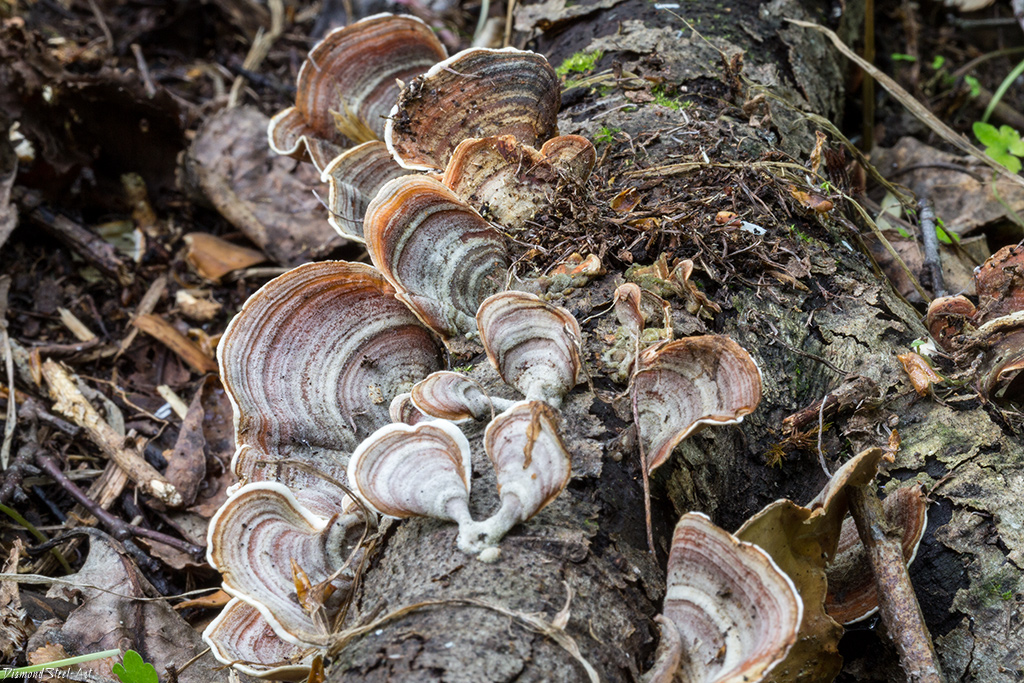
Current title
| Index Fungorum | Stereum subtomentosum Pouzar | |
| MycoBank | Stereum subtomentosum Pouzar |
Systematic position
Etymology of the species epithet
Subtomentosus, a, um, mic. a bit like felt. From sub- a little, a little, a little + tomentum, i, n, stuffing made of wool, straw, etc.
Synonyms
- Stereum ochroleucum subsp. arcticum Fr., Hymenomyc. eur. (Upsaliae): 639 (1874)
- Stereum arcticum (Fr.) Mussat, in Saccardo, Syll. fung. (Abellini) 15: 402 (1901)
Other names: Felt Stereum, Weakly felt Stereum.
Habit
Fruit body: Sedentary, cantilever, hoof-shaped, in the form of an irregular growth or rosette
Hymenophore: Smooth, not pronounced
Fruiting body
Fruiting bodies are annual, growing in a row or in tiled groups, outstretched-bent, fan-shaped, attached to the substrate by a wide base, sometimes funnel-shaped or coiled like a shell, and attached to the substrate by a tapering lateral false stem. Neighboring blades often grow together with each other and envelop the stalks of grass, twigs, and various forest debris encountered on the way. Individual fruiting bodies up to 50 (80) mm in width, 30 - 70 mm from edge to base and about 1 mm in thickness. The edge is always light, sometimes almost white, wavy or lobed. The surface is velvety, thin-lined, brightly and contrastingly colored: concentrically zoned with stripes of different shades of red, brown, gray and almost black. In old age and in dry weather, the surface fades and fades. In humid habitats, green and blue-green algae settle on the fruit bodies, coloring the surface in green shades.
The hymenophore is smooth, slightly lumpy, dull, sometimes with concentrically located grooves, gray-yellow, light brown, light ocher, turns yellow in the damaged areas.
Pulp
The pulp is fibrous, elastic, hard-leathery, yellow-ocher, ocher-brown. Smell and taste are mild.
Microscopy
Spores 5.5 - 6.5 × 2 - 3 μm, ellipsoid-cylindrical, smooth, hyaline.
Basidia 45 - 60 × 5 - 6 μm, narrow-clavate, 4-spore, without a buckle at the base.
There are no cystids; thick-walled terminal elements of skeletal hyphae ending in a rounded head 5 - 8 µm in diameter can be taken for them.
The hyphal system is dimitic, the generative hyphae are thin- and thick-walled, 2.5–4 µm in diameter; skeletal hyphae up to 8 µm in diameter, thick-walled.
Baffles without buckles.
Ecology and distribution
Grows in groups on dead wood of many deciduous species. Causes white rot.
In Western Siberia, it lives mainly on birch, aspen, alder, willow. It is distributed from the northern taiga, where it occasionally occurs in burnt-out areas and in settlements, to the forest-steppe, where it becomes a background species.
L-L-L-L-L:
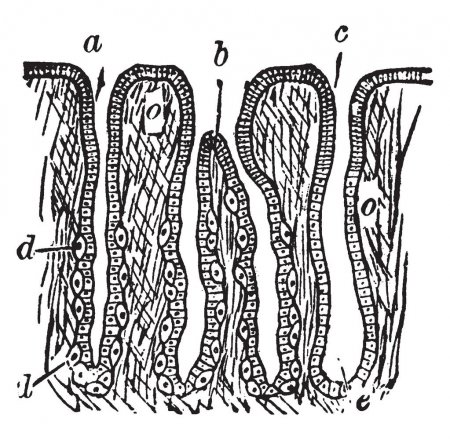 Bang bang bang bang bang bang bang bang bang bang bang bang bang bang bang Bump, bump, bump, bump.
Bang bang bang bang bang bang bang bang bang bang bang bang bang bang bang Bump, bump, bump, bump.
.
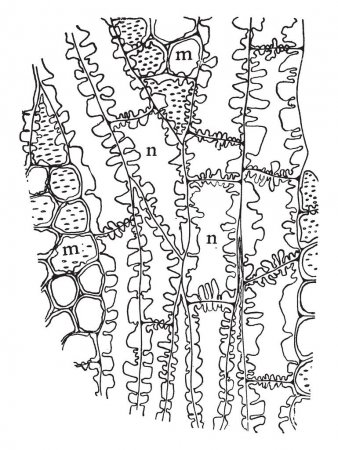 Pink and white. Burgundy, burgundy, burgundy, bark, burgundy Bunker
Pink and white. Burgundy, burgundy, burgundy, bark, burgundy Bunker
.
 Bump, bump, bump, bump, bump »Ð¸Ð½Ð¸Ð¸ ил и гÑÐ ° виÑовкР° иР»Ð» ÑÑÑÑÐ ° Ñии
Bump, bump, bump, bump, bump »Ð¸Ð½Ð¸Ð¸ ил и гÑÐ ° виÑовкР° иР»Ð» ÑÑÑÑÐ ° Ñии
.
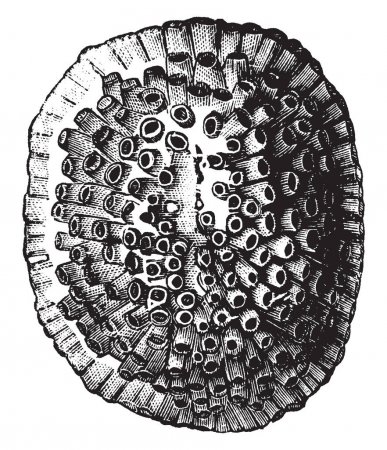 Burgundy, bark and bark In the morning
Burgundy, bark and bark In the morning
.
Donut donut Bump, bump, bump, bump, bump, bump Red carpet
.
Line, line, line, line, line, line, line, line, line, line, line, line, line, line, line, line, line, line, line, line Burgundy иÐ
.
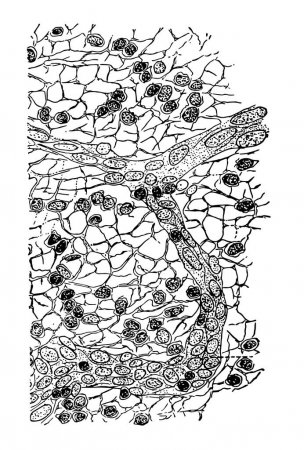 Burgundy burgundy barton Bump, bump, bump, bump
Burgundy burgundy barton Bump, bump, bump, bump
.
 Bang bang bang bang bang bang bang bang bang bang bang bang bang bang bang Bump, bump, bump, bump.
Bang bang bang bang bang bang bang bang bang bang bang bang bang bang bang Bump, bump, bump, bump.
.
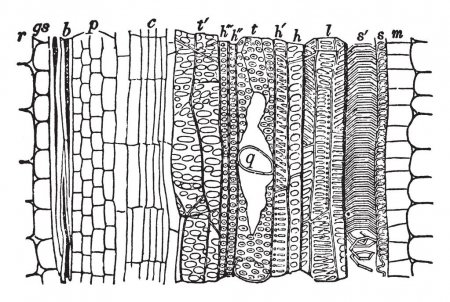 Bark, bark, bark, bark, bump Flare
Bark, bark, bark, bark, bump Flare
.
Similar species
Stereum harsh haired, like any variety, has twins. These include:
- Felt. The variety is distinguished by its large size, velvety surface and red-brown color. The fruiting body is attached to the substrate by a small part of the lateral side. The underside is matte, slightly wrinkled, gray-brown in color. The variety is inedible, as it has a tough cork pulp, odorless and tasteless. Distributed in the northern temperate zone, bears fruit throughout the warm period.
- Tinder fungus is sulfur-yellow, conditionally edible mushroom. In cooking, only young specimens are used, since the pulp has a pleasant sour taste. The species grows on live wood, not high above the ground. It can be recognized by a fan-shaped pseudo-hat measuring 10 to 40 cm. The surface has an orange-yellow color with a slight pink tint. The snow-white pulp in young specimens is soft and juicy, has a sour taste and a delicate lemon aroma.
- Trichaptum is a double, inedible mushroom. A small fruiting body is located on dead wood in multi-tiered groups. The pseudo-hat is semicircular, irregularly fan-shaped. The surface is felt, it becomes smooth with age. The color is light gray, brown or golden. Distributed throughout Russia. Bears fruit from June to September.
Stropharia blacksporous (Stropharia melanosperma)
or
External description
Hat:
In young mushrooms, the cap is cushion-shaped. With age, the cap opens and becomes almost completely open. The diameter of the cap is 2-8 cm. The surface of the cap has all shades of yellow, from light yellow to lemon. Colored unevenly, whitish at the edges. Mature mushrooms have a faded cap. Sometimes, flaky remnants of the bedspread are visible along the edges of the cap. In wet weather, the cap is oily and smooth.
Pulp:
thick, rather soft, light. At the break, the flesh does not change color. Has an unusual sweetish odor.
Plates:
of medium width and frequency, adherent to the edges of the cap and stem. If you carefully cut off the leg, then the bottom surface of the cap becomes completely flat. In young mushrooms, the plates have a grayish color, then they become dark gray from ripe spores.
Spore Powder:
violet brown or dark purple.
Leg:
Stropharia blacksporous has a white leg. Up to ten centimeters long, up to 1 cm thick. The lower part of the leg is covered with small whitish-gray flakes. It may slightly thicken at the base.There is a small, neat ring on the leg. The ring, located high in the upper part, is at first white, later darkens from maturing spores. The surface of the leg may turn yellow with small spots. Inside, the leg is at first solid, then becomes hollow.
Spreading
According to some sources, Stropharia chernosporovaya bears fruit from the beginning of summer until an unknown time. The mushroom is not very common. Grows in gardens, fields, meadows and pastures, sometimes found in forests. Prefers manured and sandy soils. Grows singly or in small groups. There are two or three mushrooms in an aggregate.
Similarity
Black-spore stropharia resembles a coppice or fine champignon. But, quite a bit, since the shape and color of the Stropharia plates, as well as the color of the spore powder, allow you to very quickly discard the version with Champignons. The same can be said about the white subspecies of Early Polevik.
Edibility
Some sources claim that Black Spore Stropharia is an edible or conditionally edible mushroom. One thing is certain, it is definitely not poisonous or hallucinogenic. True, it is not at all clear why this mushroom should be grown then.
Remarks
This porcini mushroom strongly resembles champignons, but when the plate is boiled, Stropharia lose their pigment, which is also its feature and difference.
view
C. hirsutum and S. Ostrea are members of a complex of species, some of which may not be reliably distinguished without microscopic analysis.
There are numerous species of this genus (and families), the most common one being far Stereum hirsutum .
- Stereum acanthophysatum
- Stereum adnatum
- Stereum albostipitatum
- Stereum alternum
- Stereum antarcticum
- Stereum aotearoa
- Stereum aratum
- Stereum armeniacum
- Stereum ear tweezers
- Stereum aurora
- Stereum avellanaceum
- Stereum azonum
- Stereum bagliettoanum
- Stereum beigehymenium
- Stereum Bellum
- Stereum bombycinum
- Stereum boninense
- Stereum braunii
- Stereum burtiasmum
- Stereum burtissimum
- Stereum campaniforme
- Stereum carthusianum
- Stereum complicatum
- Stereum cupulatum
- Stereum durum
- Stereum earlei
- Stereum elongatum
- Stereum fasciatum
- Stereum gausapatum
- Stereum hirsutum
- Stereum insignitum - can be considered synonymous Stereum subtomentosum
- Stereum ostrea - False turkey tail. Sometimes considered variety * Stereum hirsutum .
- Stereum papyrinum - Preferred title: Lopharia papyrina
- Stereum purpureum - Silver leaf fungus. Preferred name: Chondrostereum purpureum
- Stereum rugosum
- Stereum Blushing
- Stereum subtomentosum
- Stereum taxodii - Preferred title: Laurilia taxodii
Hard-haired stereum: photo and description, application
| Name: | Stereum coarse-haired |
| Latin name: | Stereum hirsutum |
| Type of: | Inedible |
| Specifications: |
|
The coarse-haired stereum is an inedible representative of the Stereumov family. It prefers to grow on stumps, dry wood, and living damaged trunks. The variety is widespread throughout Russia, bears fruit throughout the warm period. The mushroom is considered medicinal and is used in folk medicine.
Where the coarse-haired stereum grows
The variety grows on dry, deciduous and coniferous stumps. The coarse-haired stereum grows on rotten wood as a saprotroph, thereby playing the role of a forest orderly, and on living damaged trees as a parasite, causing a white gil. Damaged trunks begin to quickly collapse and die. The species grows in large groups, forming multi-tiered families in the form of wavy ribbons.
What does a hard-haired stereo look like?
The species is widespread throughout Russia; it can be identified by a small fan-shaped fruit body with outstretched-bent edges. The surface is hairy, pubescent, colored yellow-brown. After rain, it becomes covered with algae and takes on a slimy greenish tint. The underside is smooth, soft canary in color, with age it changes color to dark orange or brown. After frost, in early spring, the surface becomes grayish-brown with light wavy edges. The fungus attaches itself to the wood with its entire lateral side, forming long, multi-tiered rows.
The species reproduces by colorless cylindrical spores, which are located in a white spore powder.
Is it possible to eat coarse-haired stereum
The coarse-haired stereum is an inedible species, as it has a tough cork pulp. There is no taste or smell.The mushroom begins to bear fruit from June to December; in regions with warm winters, it can grow all year round.
Similar species
Stereum harsh haired, like any variety, has twins. These include:
- Felt. The variety is distinguished by its large size, velvety surface and red-brown color. The fruiting body is attached to the substrate by a small part of the lateral side. The underside is matte, slightly wrinkled, gray-brown in color. The variety is inedible, as it has a tough cork pulp, odorless and tasteless. Distributed in the northern temperate zone, bears fruit throughout the warm period.
- Tinder fungus is sulfur-yellow, conditionally edible mushroom. In cooking, only young specimens are used, since the pulp has a pleasant sour taste. The species grows on live wood, not high above the ground. It can be recognized by a fan-shaped pseudo-hat measuring 10 to 40 cm. The surface has an orange-yellow color with a slight pink tint. The snow-white pulp in young specimens is soft and juicy, has a sour taste and a delicate lemon aroma.
- Trichaptum is a double, inedible mushroom. A small fruiting body is located on dead wood in multi-tiered groups. The pseudo-hat is semicircular, irregularly fan-shaped. The surface is felt, it becomes smooth with age. The color is light gray, brown or golden. Distributed throughout Russia. Bears fruit from June to September.
Application
Coarse-haired stereum has medicinal properties. The fruit body is distinguished by antitumor and antibacterial properties, therefore it is widely used in folk medicine. Decoctions and infusions stop the growth of cancer cells, fight malaria, help with Ehrlich's sarcoma and carcinoma. It is possible to use the gifts of this type of forest only strictly according to the rules, otherwise there is a great risk of poisoning.
Conclusion
Hard-haired stereum is an inedible variety of the Stereumov family. The species grows on dry and damaged wood, in deciduous and coniferous forests. Due to its medicinal properties, it is widely used in folk medicine.
Coarse-haired stereum: where it grows, how it looks, photo, edibility
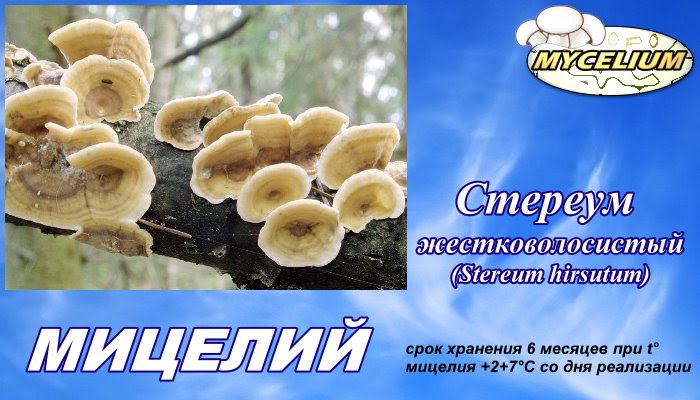
Stereum hirsutum INEDIBLE
Fruit body. 2-3 cm in diameter, at first spotted, prostrate, rezupinate, ocher. yellow-brownish with a yellow edge, then curved, fan-shaped, less often rosette-shaped, thin, laterally accreted or sessile, with a wavy edge, the upper side is pubescent, hairy, with noticeable concentric zones, darker at the base, gray-ocher, gray-yellow, with yellowish or ocher edge. After frosts, in winter and spring, it has a grayish-brownish color with a light edge, which complicates the identification. Tubular layer. Smooth, matte, with concentric stripes, first bright yellow, then yellowish orange, ocher. Pulp. Thin, dry, leathery, hard, yellow-ocher, almost odorless. Beneficial features. This mushroom has the ability to break down fats. It has also long been used as the main ingredient in antidotes for many well-known poisons. The harsh stereum is able to remove toxins and carcinogens from the body.
GROWING INSTRUCTIONS
Wood preparation. Hardwood trees are felled after the leaves fall and before bud break. Tree trunks with a diameter of 15-20cm. sawn into cuts 1m long. and put in a woodpile in a shady place. Before inoculation, freshly cut wood should be aged for about 2 months. Immediately before planting, the trunks are sawn into 15-20 cm long cuts.
Inoculation. Holes with a diameter of 10-15 mm are drilled in the cuts. and a depth of 30-60mm. then they fill them with mycelium of the fungus, and on top they cover the hole with a thin layer of paraffin or wax.
Garden bed device. A trench 1m wide is dug in the ground. and a depth of 15cm. arbitrary length. Then, in the trench, the cuts are carefully placed in two rows at the same level.The distance between the rows is 40-50cm, and between the cuts in a row is 5-7cm. The free space in the trench is covered with good fertile soil up to the upper edge of the timber. On top of the cut, the mulching material is poured with a layer of 2-3 cm. (sawdust, straw, etc.). If the soil is cold, then the trench is covered from above with a film, building a kind of greenhouse.
Maintaining a microclimate. During the growth of the mycelium in the bed, it is necessary to maintain a high temperature (20-26 ° C).
Fruiting. Fruiting bodies are usually formed one year after inoculation. For fruiting, a sufficiently high air humidity (70-85%) and a temperature in the range of 18-26 ° C are required. Usually the stump bears fruit once.
Consumption rate: one package of mycelium is enough for 30KG wood.
Substrate components. Currently, as a rule, a mixture of sawdust and chips (1: 1) of deciduous trees is used. To increase the yield, 5-15% of cereal bran is added to the main substrate, but no more. Then the mixture is soaked in a molasses solution (0.2%) for 3-4 days and fermented at room temperature.
Substrate preparation. The prepared substrate with a moisture content of up to 60% is placed in polypropylene bags 20 by 40 cm. and sterilized for 2 hours in hot water.
Inoculation. The inoculum is introduced into the substrate in compliance with the rules of sterility in the amount of 2%. After inoculation, the bags are transferred to a dark room and placed on racks.
Mycelium growth in the substrate. In the chamber, where the substrate fouling occurs, it is necessary to maintain the temperature within the range of 22-27 ° C. Gas exchange takes place through cotton-gauze plugs that close the bags or vessels. As a rule, complete colonization of the substrate occurs 20-30 days after sowing.
Fruiting. In a room with a temperature of 20-22 ° C, fruiting begins in 30-40 days. After removing the upper part of the bags, the CO2 level drops sharply and the formation of a hat begins, which requires a lighting level of 75-100 lux. It is also necessary to maintain a high humidity level of 90-95%, otherwise fruiting bodies will not form.
Harvesting. In the first wave of fruiting, the yield is usually 6-10% of the mass of the substrate, in the second 2-4%. The fruiting cycle of all phases usually takes 3-4 months.
Consumption rate: 2% of the total mass of the prepared substrate

